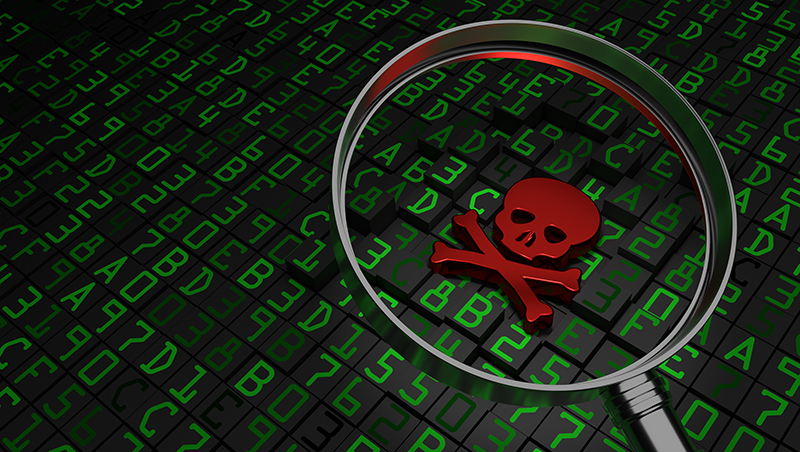Ransomware costs doubled in Q4 2019
Average ransom payments soared by 104% to $84,116, up from $41,198 in the quarter


The cost of ransomware attacks more than doubled in Q4 2019, the latest research from Coveware has concluded, following a significant increase in Ryuk and Sodinokibi breaches.
The firm’s Q4 Ransomware Marketplace report, which collects anonymous ransomware data from cases handled by its Incident Response Platform, found that the average ransom payment increased by 104% to $84,116, up from $41,198 in Q3. The median ransom payment for the quarter was $41, 179.
This doubling of the average reflects the diversity of threats attacking businesses, Coveware said, with variants such as Ryuk and Sodinokibi moving into the large enterprise space to in order to extort seven-figure pay-outs. Ryuk payments, for example, were found to have hit a new high of $780, 000 for impacted businesses during the period.
Smaller firms also continued to be at risk, with ransomware as a service variants such as Dharma, Snatch and Netwalker blanketing the small business space with a high number of lower demands – sometimes as low as $1,500.
These malicious software threats are evolving, too, with ransomware attackers moving beyond just encrypting business data and adding the exfiltration of information and threat of its release if the sum is not paid.
In terms of data recovery, Q4 saw 98% of companies receiving a working decryption tool upon payment. Of that pool, victims managed to successfully decrypt 97% of their encrypted data; a slight increase over Q3.
It was also found that the average downtime for affected firms increased to 16.2 days, up from 12.1 days previously, driven by a “higher prevalence of attacks against larger enterprises” that have more complex networks to restore, Coveware said.
Get the ITPro daily newsletter
Sign up today and you will receive a free copy of our Future Focus 2025 report - the leading guidance on AI, cybersecurity and other IT challenges as per 700+ senior executives
It also comes as a result of ransomware evolving and implanting more advanced features. In Q4, Ryuk actors introduced a “Wake-on-LAN” feature to turn on devices with a compromised network that were originally powered off.
Essentially, the addition allows attackers to infect machines during the night when the impact of security admins is limited, ultimately maximising the number of encrypted endpoints.
Ransomware as a service variant Sodinokibi was discovered to be the most prevalent type attack during the quarter, making up 29.4% of the overall total. Sodinokibi only allows a select number of affiliates to distribute the ransomware, of which usually possess specific skills to attack targets such as managed service providers.
Once an MSP’s remote monitoring and management tools (RMM) are compromised, attackers can push the ransomware to every client endpoint it manages. Sodinokibi also adapted its extortion tactics to include threatening the release of data, Coveware added.
RELATED RESOURCE

The 3 approaches of Breach and Attack Simulation technologies
A guide to the nuances of BAS, helping you stay one step ahead of cyber criminals
“Sodinokibi’s focus on MSPs results in large payouts, but relatively small victims sizes, as most companies that utilise MSPs are small enterprises with less than 200 employees,” the firm added.
Businesses fell foul to a number of ransomware attack vectors in Q4, with the top three consisting of Remote Desktop Protocol (RDP) compromise (57.4%), email phishing (26.3%) and software vulnerabilities (12.9%).
Dan is a freelance writer and regular contributor to ChannelPro, covering the latest news stories across the IT, technology, and channel landscapes. Topics regularly cover cloud technologies, cyber security, software and operating system guides, and the latest mergers and acquisitions.
A journalism graduate from Leeds Beckett University, he combines a passion for the written word with a keen interest in the latest technology and its influence in an increasingly connected world.
He started writing for ChannelPro back in 2016, focusing on a mixture of news and technology guides, before becoming a regular contributor to ITPro. Elsewhere, he has previously written news and features across a range of other topics, including sport, music, and general news.
-
 Bigger salaries, more burnout: Is the CISO role in crisis?
Bigger salaries, more burnout: Is the CISO role in crisis?In-depth CISOs are more stressed than ever before – but why is this and what can be done?
By Kate O'Flaherty Published
-
 Cheap cyber crime kits can be bought on the dark web for less than $25
Cheap cyber crime kits can be bought on the dark web for less than $25News Research from NordVPN shows phishing kits are now widely available on the dark web and via messaging apps like Telegram, and are often selling for less than $25.
By Emma Woollacott Published
-
 ‘Phishing kits are a force multiplier': Cheap cyber crime kits can be bought on the dark web for less than $25 – and experts warn it’s lowering the barrier of entry for amateur hackers
‘Phishing kits are a force multiplier': Cheap cyber crime kits can be bought on the dark web for less than $25 – and experts warn it’s lowering the barrier of entry for amateur hackersNews Research from NordVPN shows phishing kits are now widely available on the dark web and via messaging apps like Telegram, and are often selling for less than $25.
By Emma Woollacott Published
-
 Healthcare systems are rife with exploits — and ransomware gangs have noticed
Healthcare systems are rife with exploits — and ransomware gangs have noticedNews Nearly nine-in-ten healthcare organizations have medical devices that are vulnerable to exploits, and ransomware groups are taking notice.
By Nicole Kobie Published
-
 Alleged LockBit developer extradited to the US
Alleged LockBit developer extradited to the USNews A Russian-Israeli man has been extradited to the US amid accusations of being a key LockBit ransomware developer.
By Emma Woollacott Published
-
 February was the worst month on record for ransomware attacks – and one threat group had a field day
February was the worst month on record for ransomware attacks – and one threat group had a field dayNews February 2025 was the worst month on record for the number of ransomware attacks, according to new research from Bitdefender.
By Emma Woollacott Published
-
 CISA issues warning over Medusa ransomware after 300 victims from critical sectors impacted
CISA issues warning over Medusa ransomware after 300 victims from critical sectors impactedNews The Medusa ransomware as a Service operation compromised twice as many organizations at the start of 2025 compared to 2024
By Solomon Klappholz Published
-
 Warning issued over prolific 'Ghost' ransomware group
Warning issued over prolific 'Ghost' ransomware groupNews The Ghost ransomware group is known to act fast and exploit vulnerabilities in public-facing appliances
By Solomon Klappholz Published
-
 The Zservers takedown is another big win for law enforcement
The Zservers takedown is another big win for law enforcementNews LockBit has been dealt another blow by law enforcement after Dutch police took 127 of its servers offline
By Solomon Klappholz Published
-
 There’s a new ransomware player on the scene: the ‘BlackLock’ group has become one of the most prolific operators in the cyber crime industry – and researchers warn it’s only going to get worse for potential victims
There’s a new ransomware player on the scene: the ‘BlackLock’ group has become one of the most prolific operators in the cyber crime industry – and researchers warn it’s only going to get worse for potential victimsNews Security experts have warned the BlackLock group could become the most active ransomware operator in 2025
By Solomon Klappholz Published